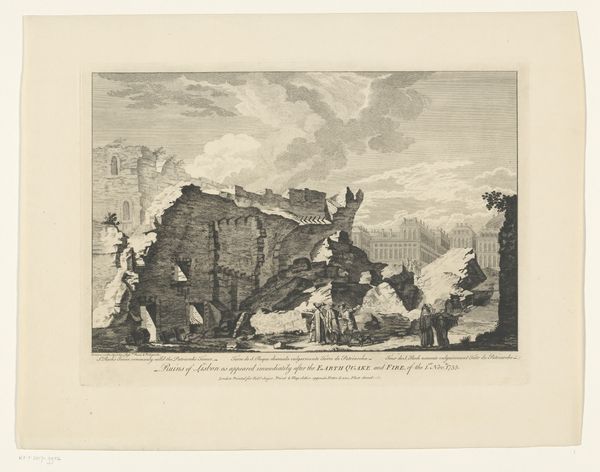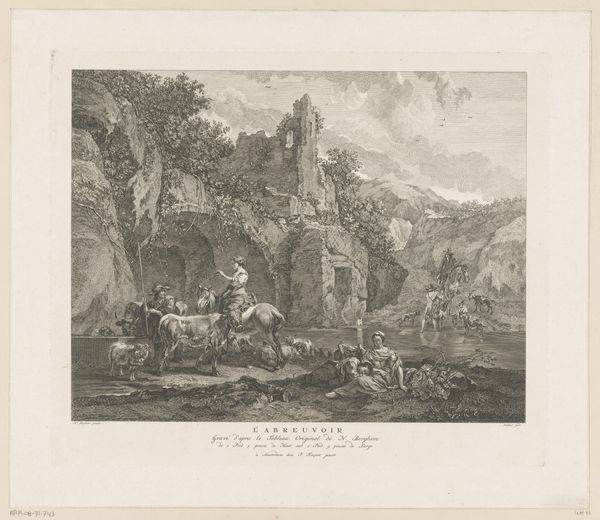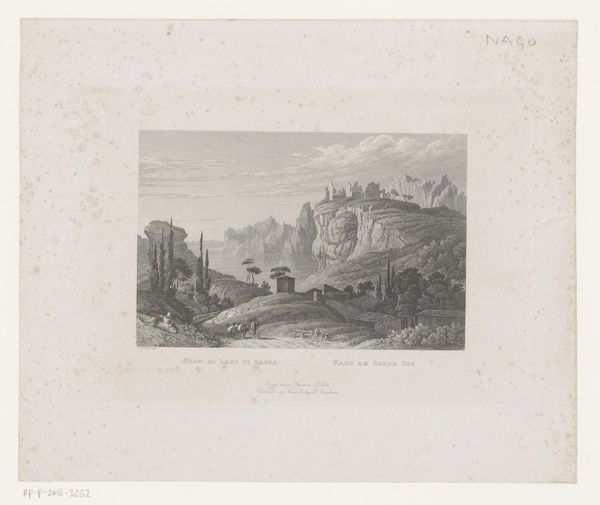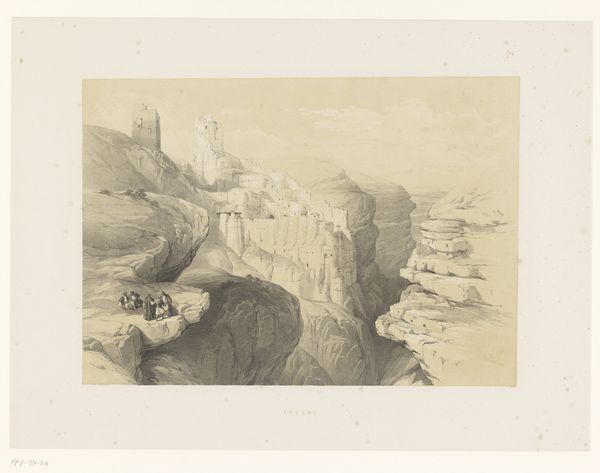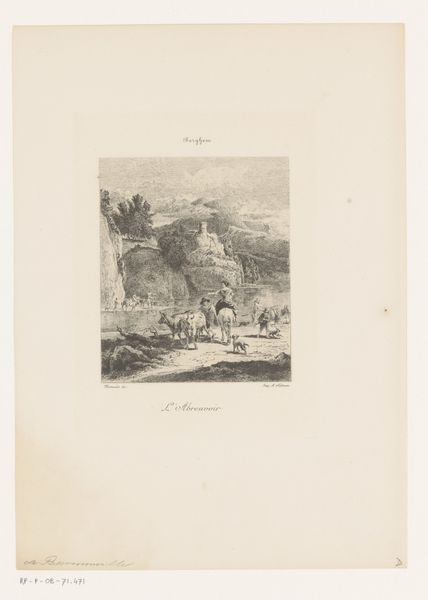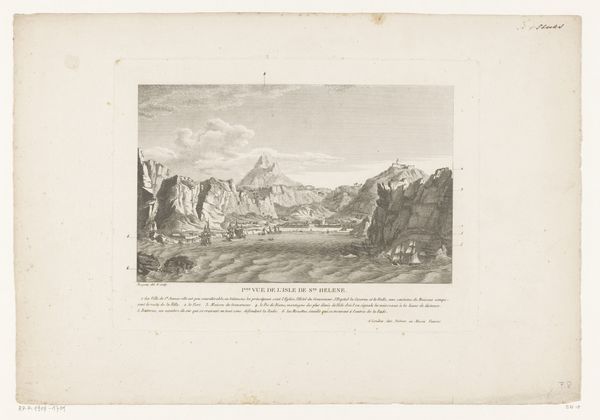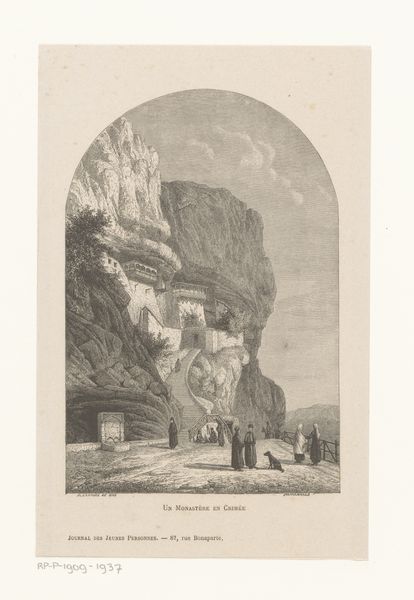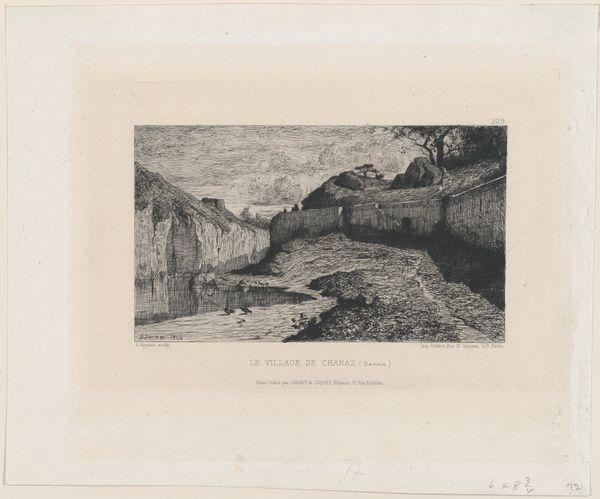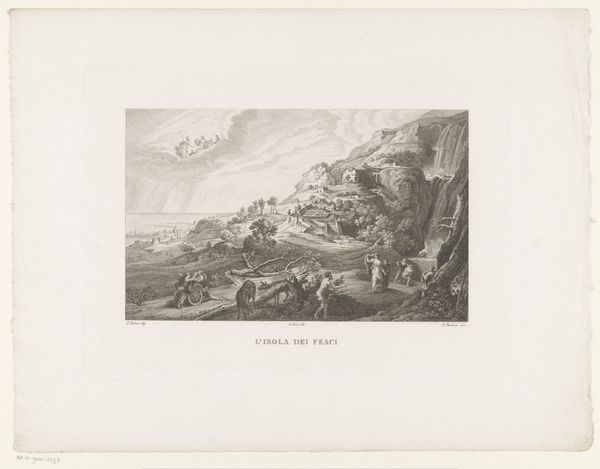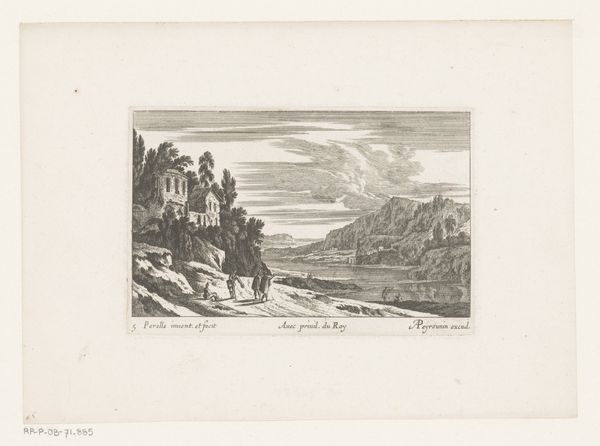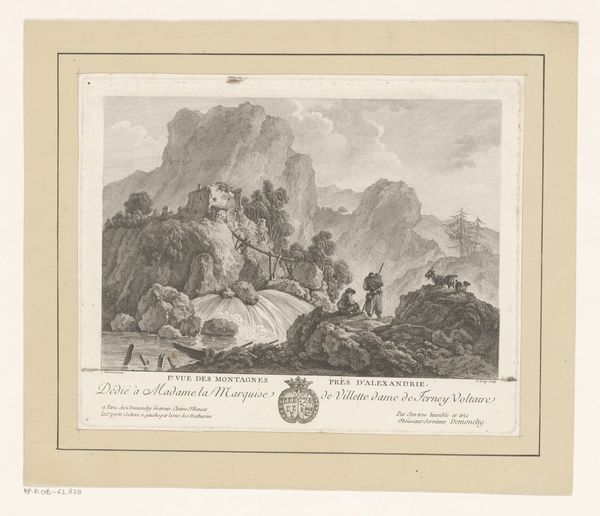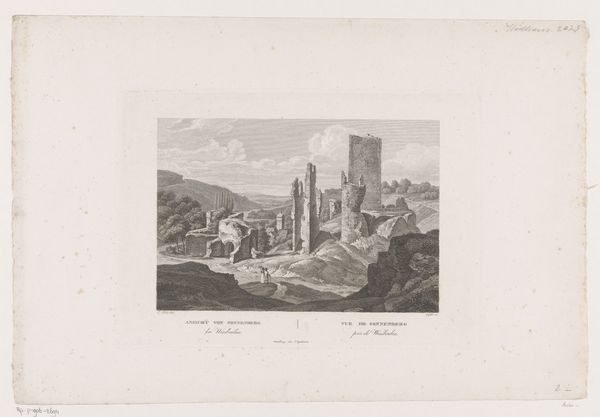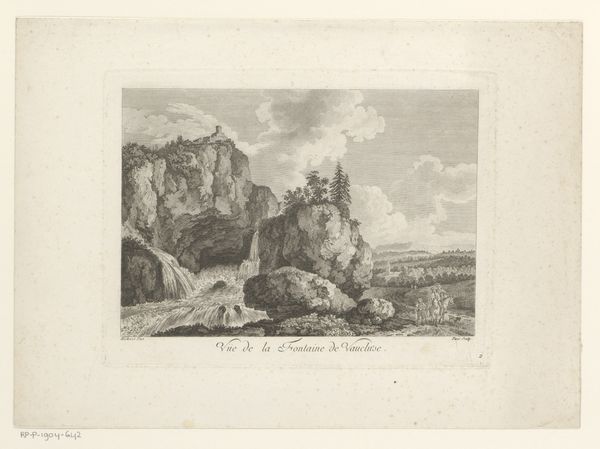
print, engraving
#
neoclacissism
# print
#
landscape
#
cityscape
#
history-painting
#
engraving
Dimensions: height 325 mm, width 390 mm
Copyright: Rijks Museum: Open Domain
Curator: So here we have Juan Galvez’s “View of a Destroyed Church in Zaragoza,” made sometime between 1808 and 1814. It’s a print, an engraving. Stark, isn’t it? Editor: It feels… raw. Look at the shadows, the ruined architecture looming against that almost blank sky. There’s such a palpable sense of loss and… maybe defiance? Curator: Definitely. You have to understand, this wasn’t just a depiction of a ruined building. Zaragoza was under siege by the French during the Peninsular War, and the devastation was immense. Editor: So, Galvez isn't simply creating a landscape, but documenting the trauma of war, of colonial violence imposed by Napoleon's Empire onto the people and architecture of Spain. You feel that tension in the neoclassical style, how it emphasizes this desire to return to beauty, while staring straight into the horrors of the present. Curator: It's more than just a war scene, isn’t it? It’s got this melancholic air. Even with the destruction, you see these figures trying to clear rubble. There’s life persisting amid the chaos. They almost feel… insignificant within the vastness of the wreckage, yet, their presence hints to this larger story of endurance, don’t you think? Editor: Exactly, that interplay of fragility and resilience is key. And look at the strategic composition that juxtaposes light and darkness: a commentary on the dialectical relationship between hope and despair, destruction and rebuilding? The piece reflects this tension of how a society reckons with destruction and attempts to reconstruct after experiencing total loss. Curator: Right, how does one move forward when faced with complete annihilation? In a way, it asks viewers to consider this constant interplay of creating something new in place of old. I see something fundamentally hopeful within this image. A whisper that one can—and perhaps, must—move forward from these events, despite how brutal the reality of them might be. Editor: And in today’s global climate of violence and displacement, that whisper resonates deeply. It’s a call to remember, but also a reminder that even from the ruins, life, resistance, and, ultimately, beauty can emerge.
Comments
No comments
Be the first to comment and join the conversation on the ultimate creative platform.
